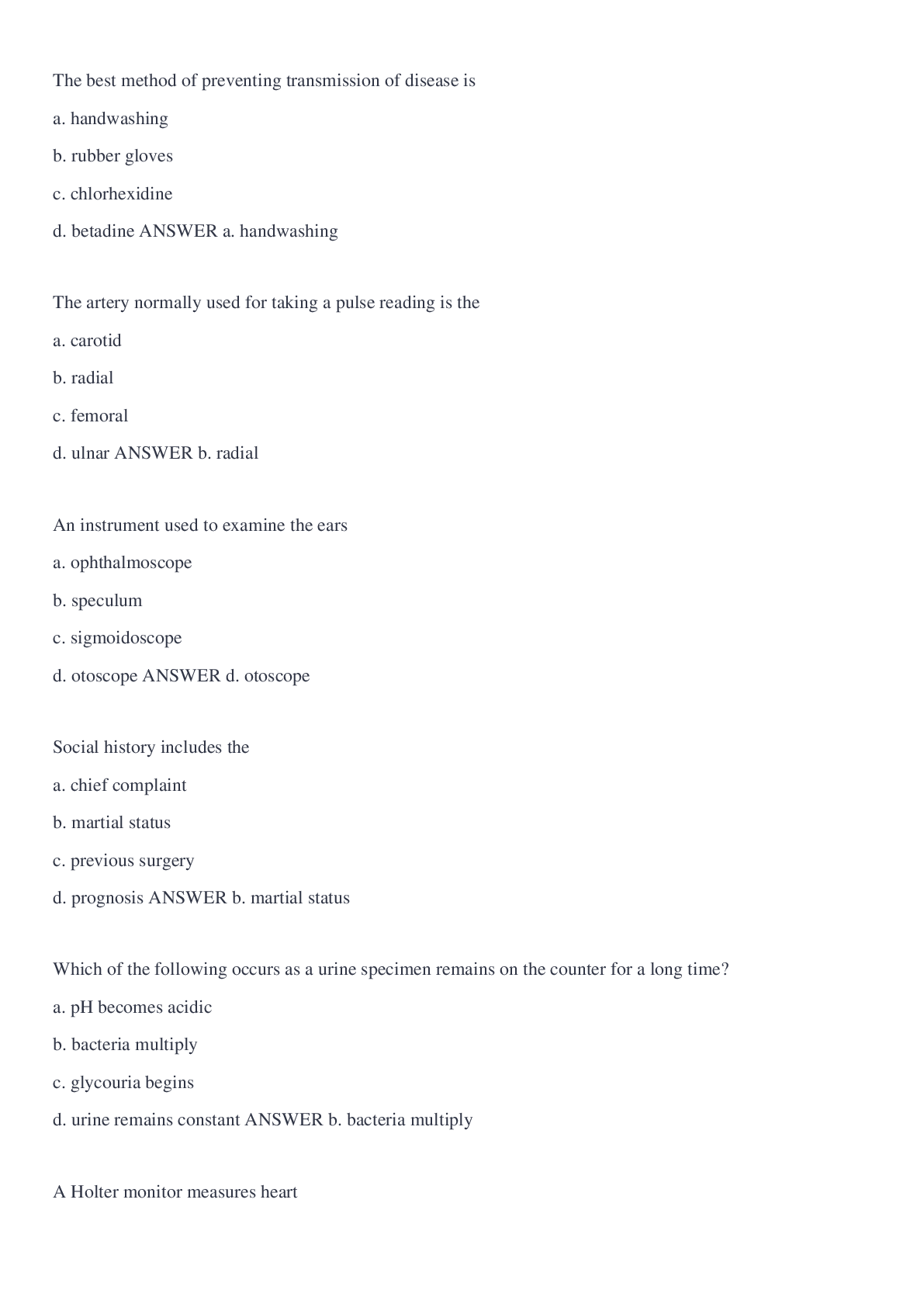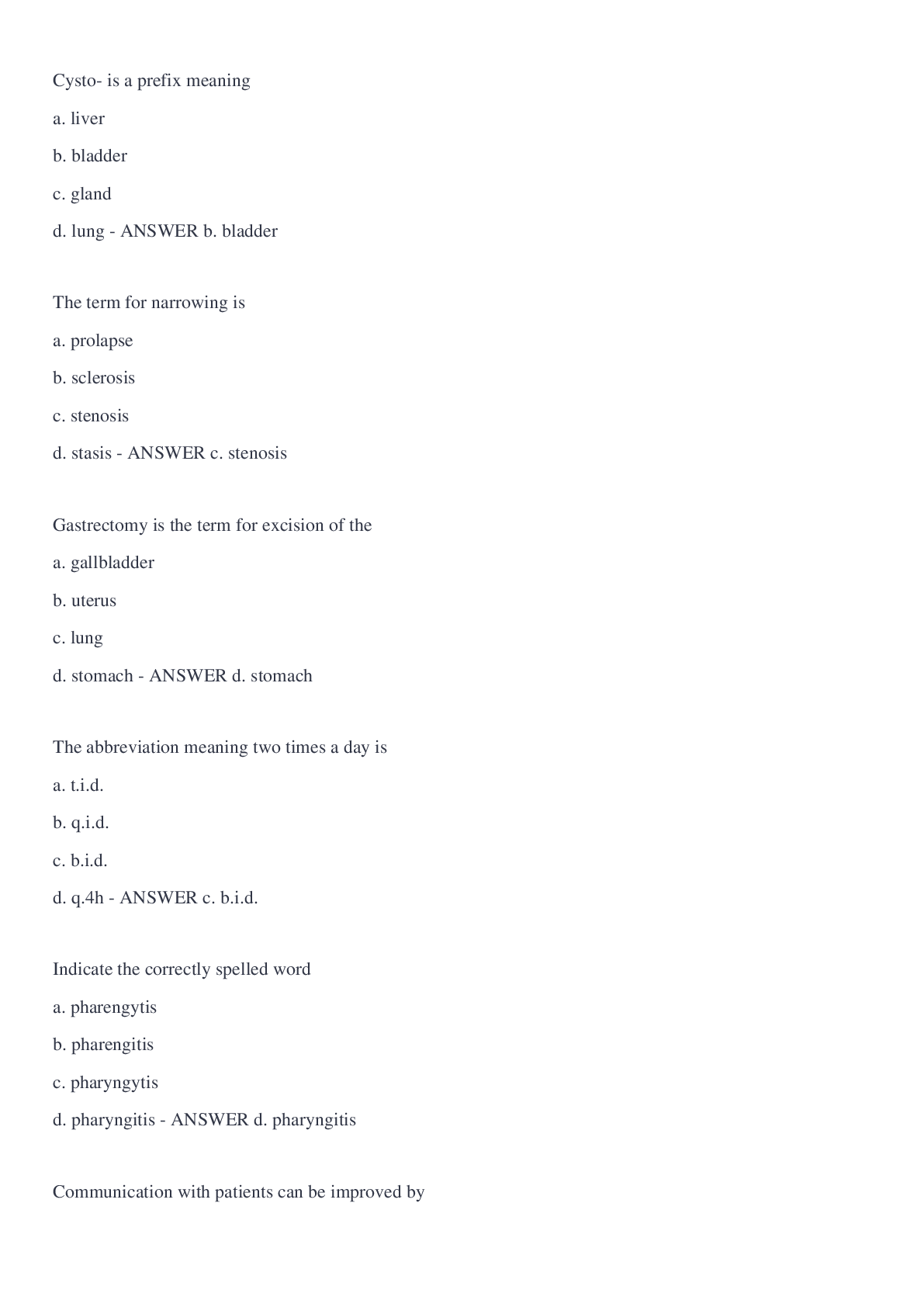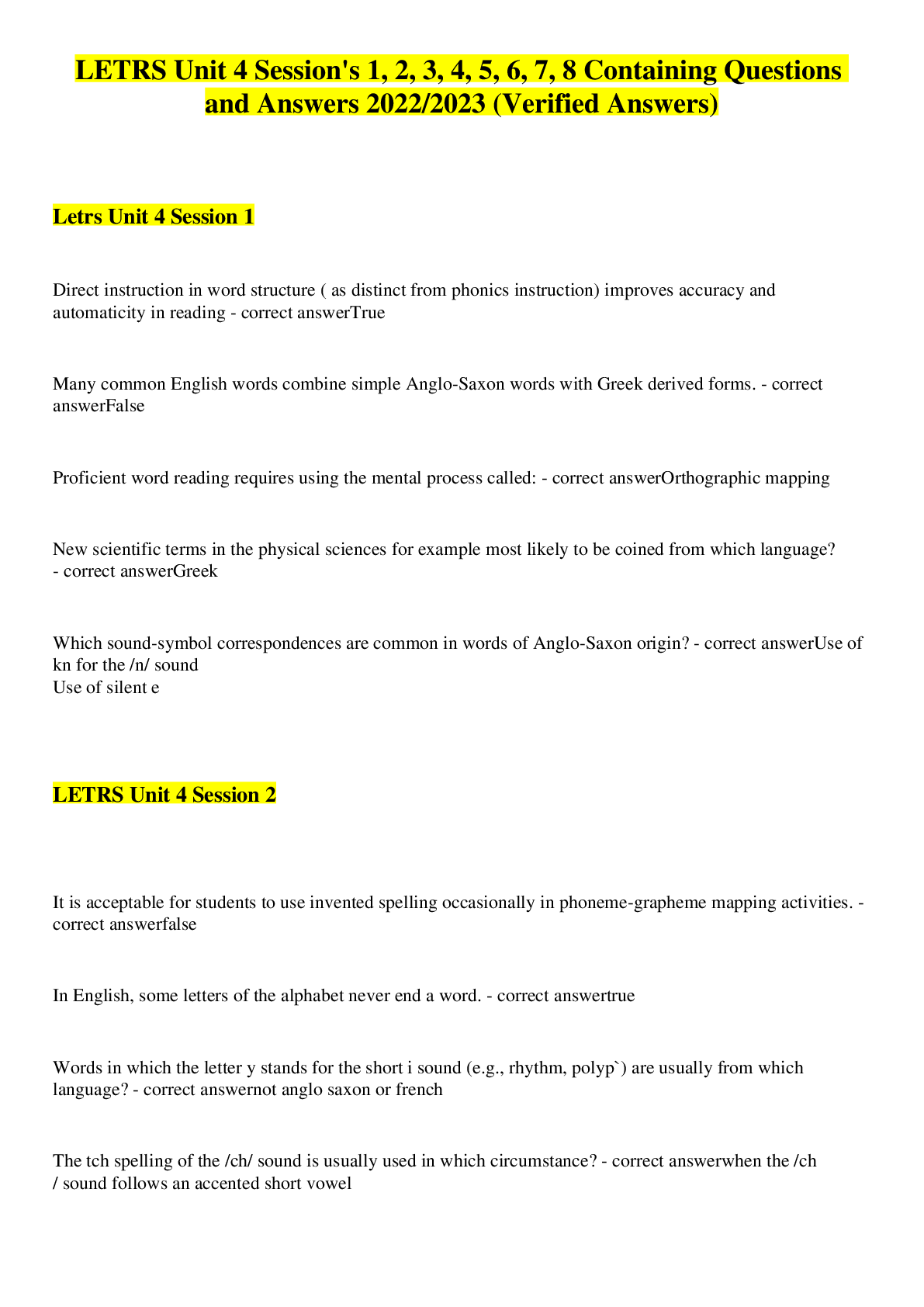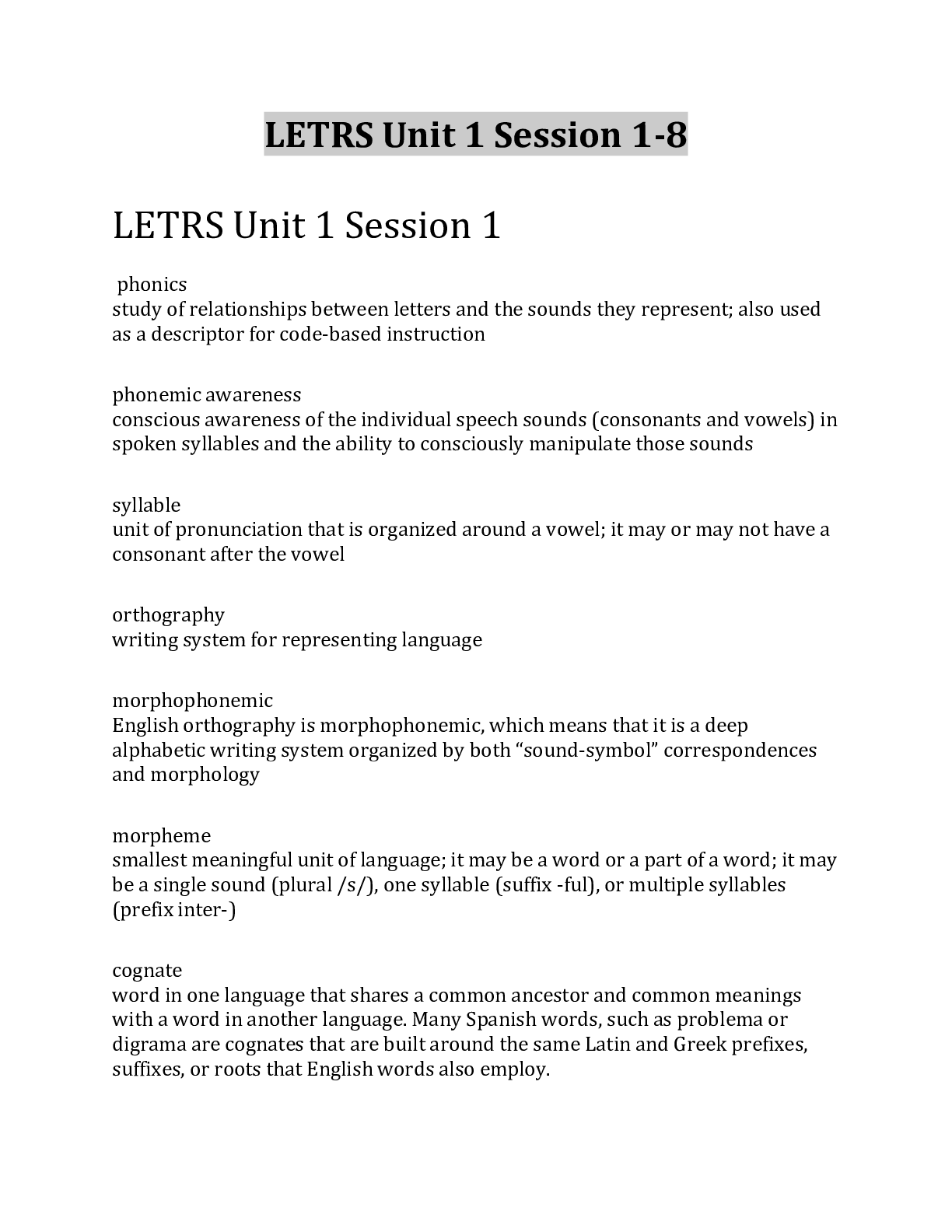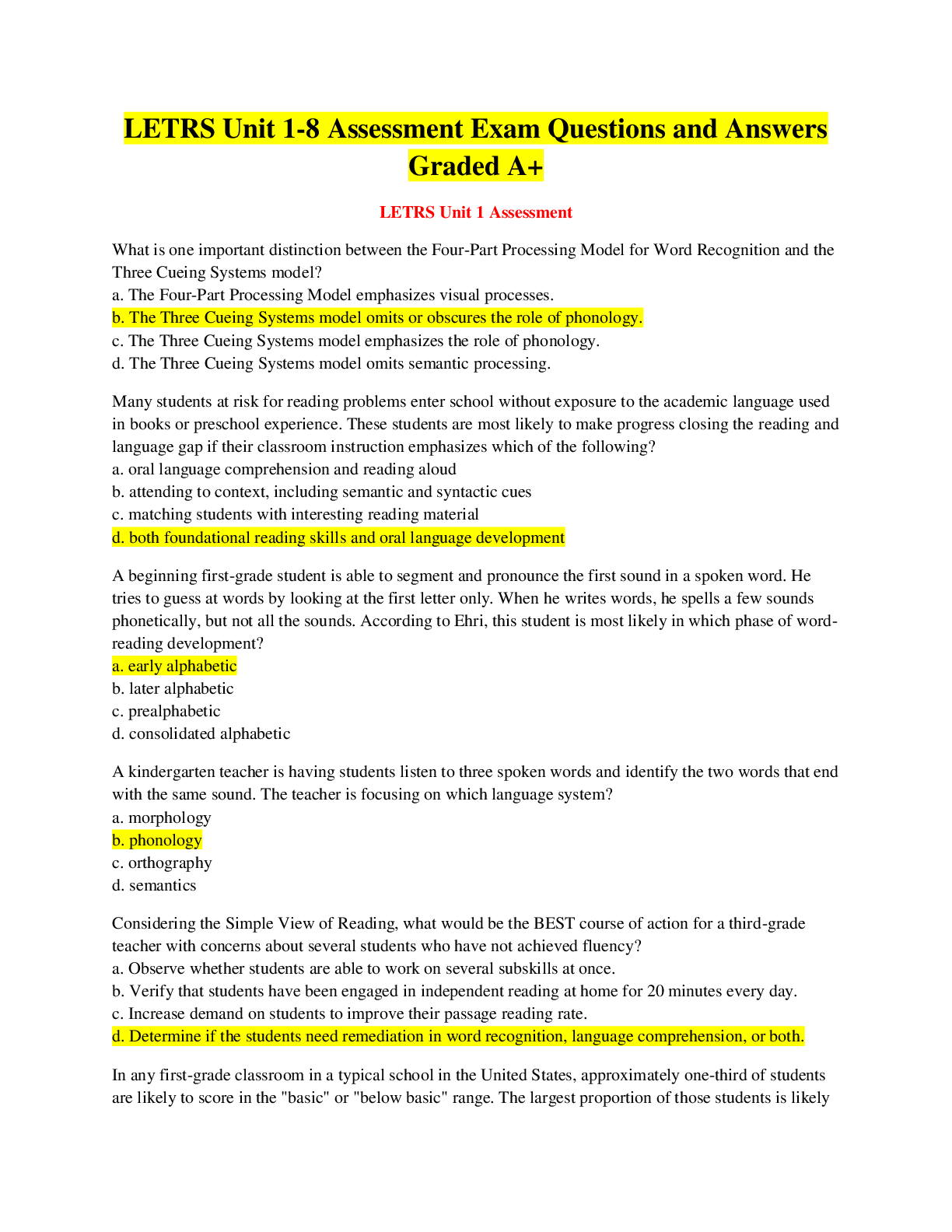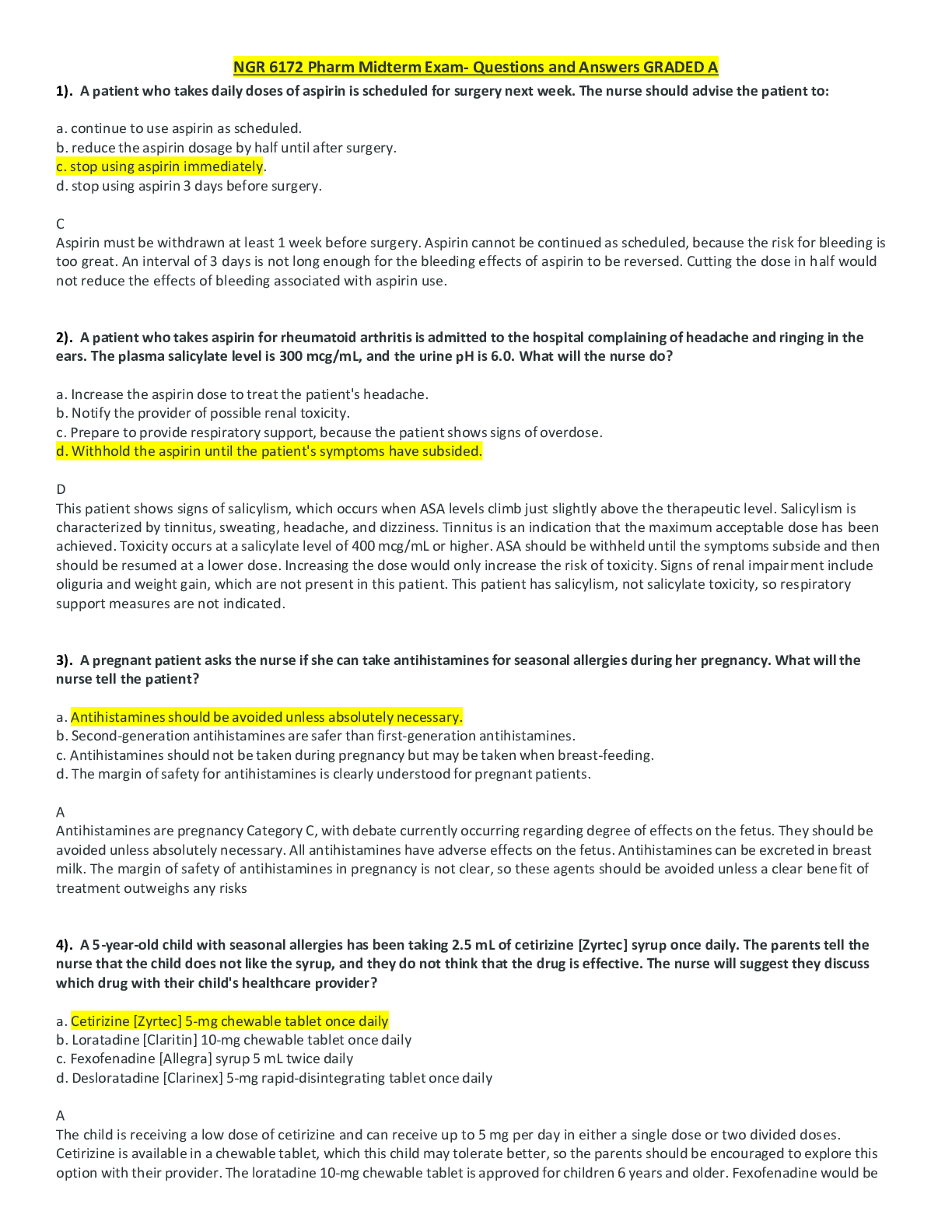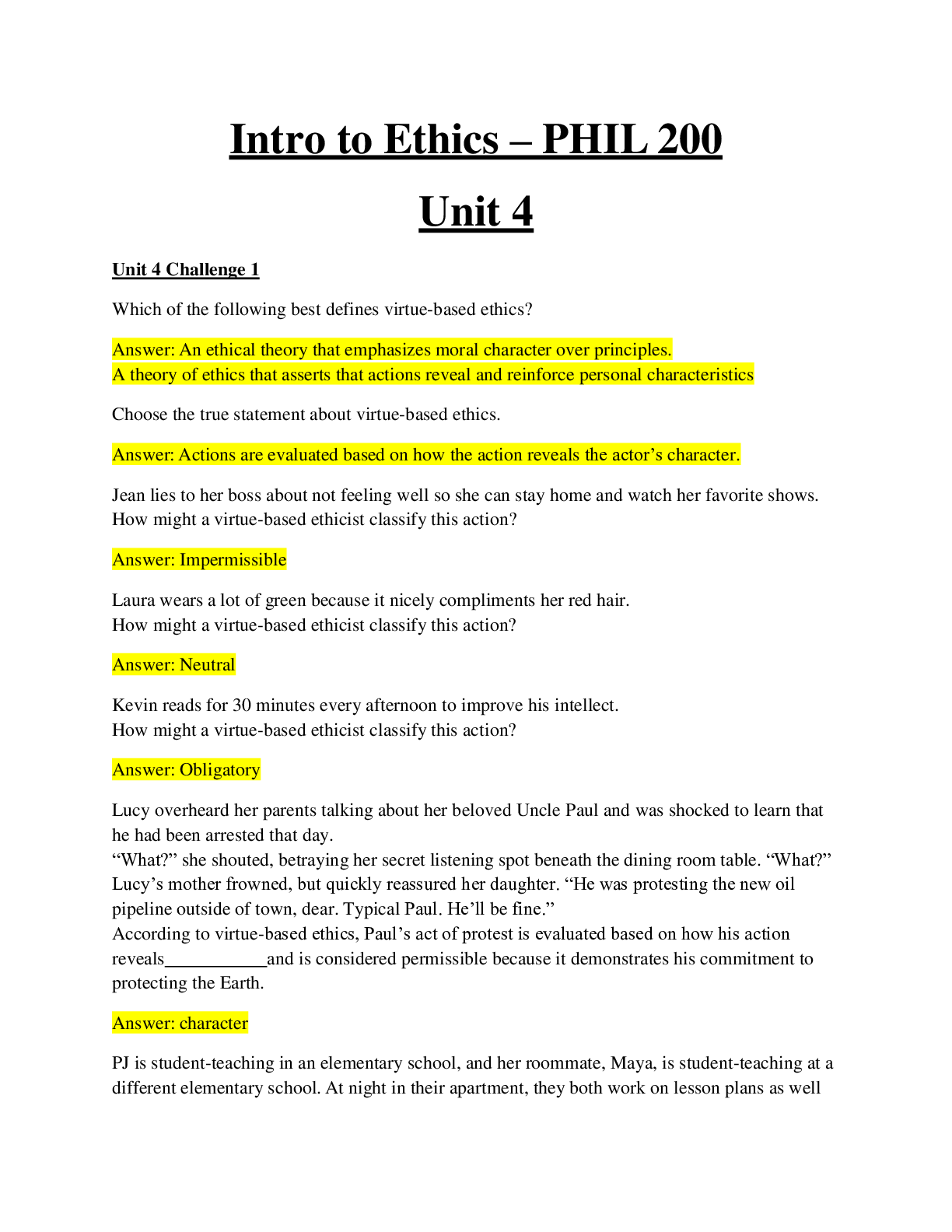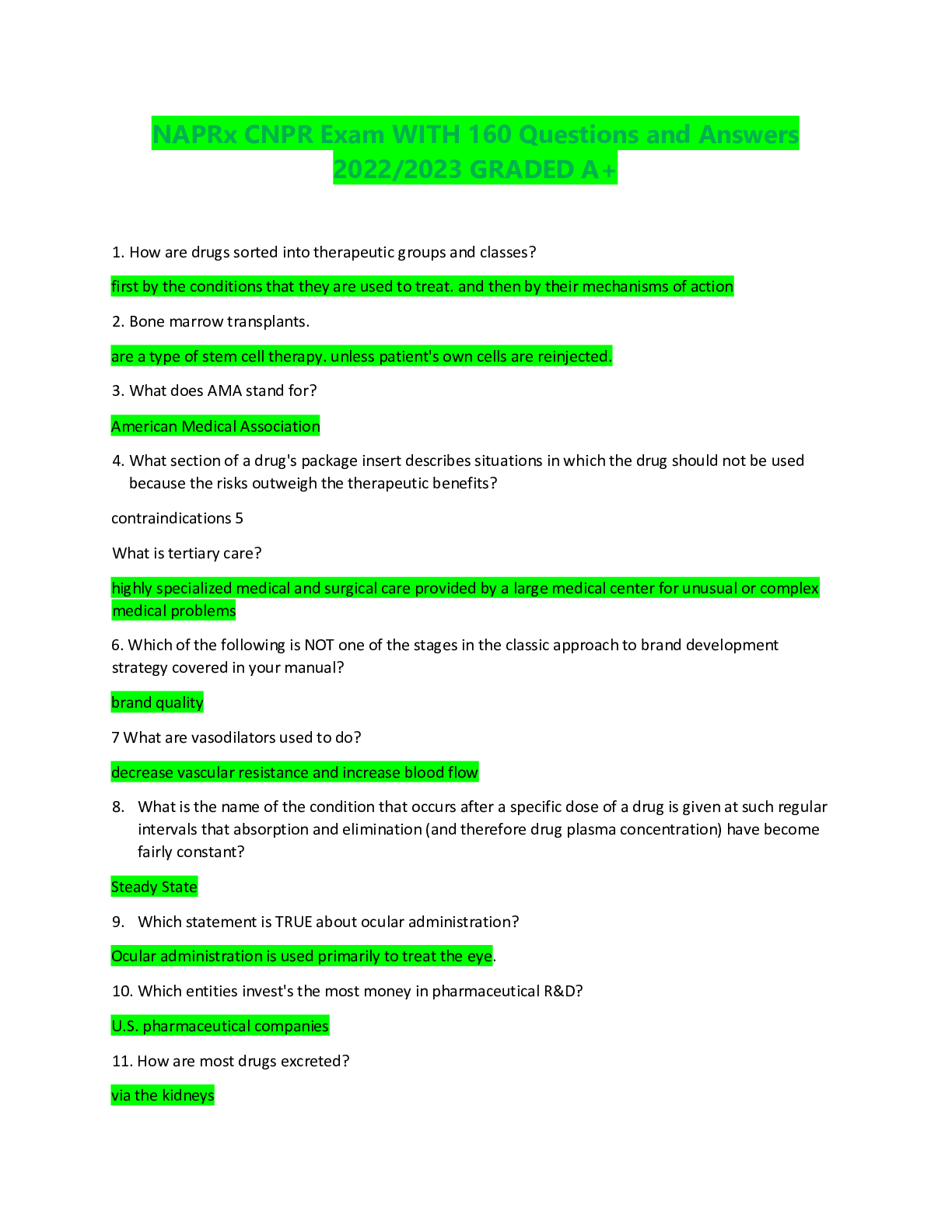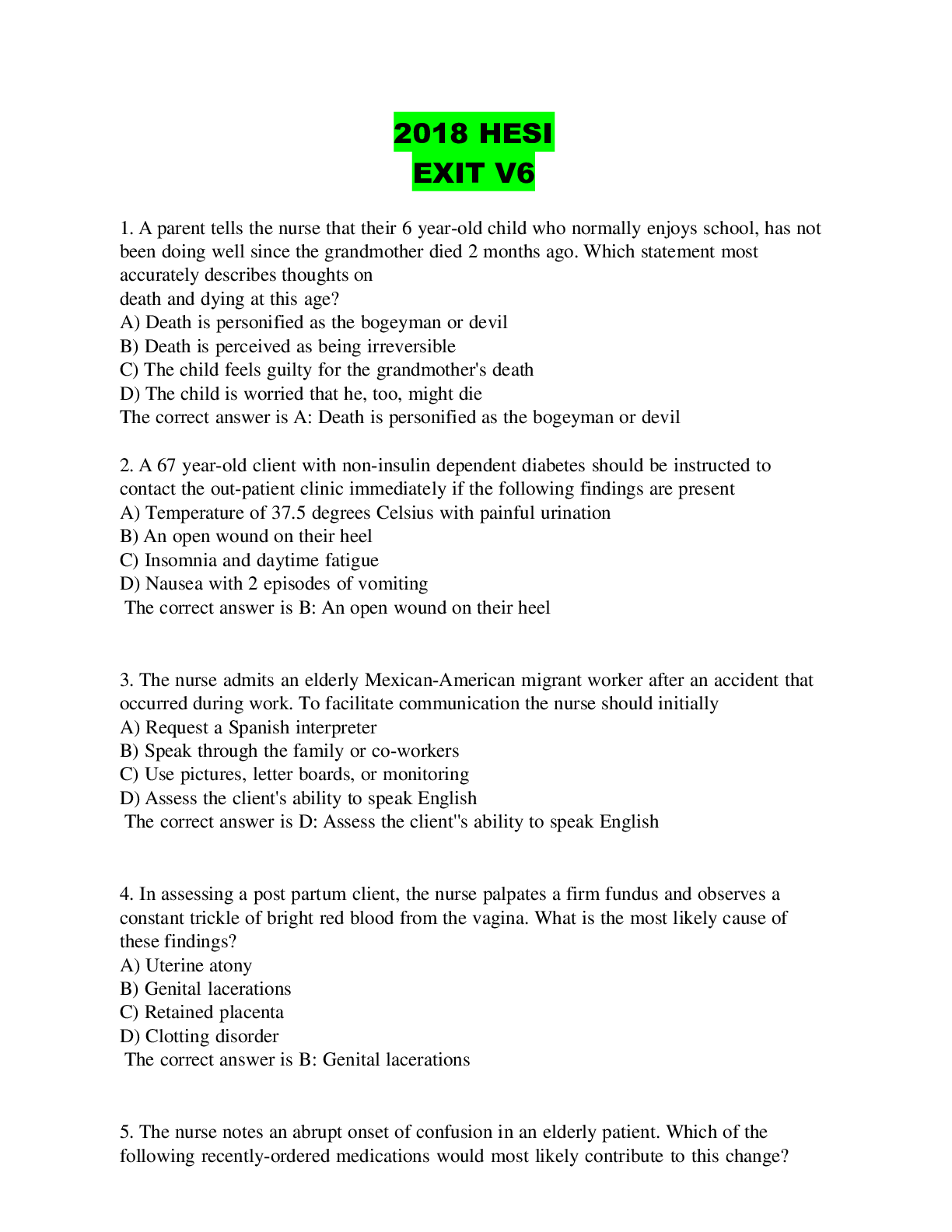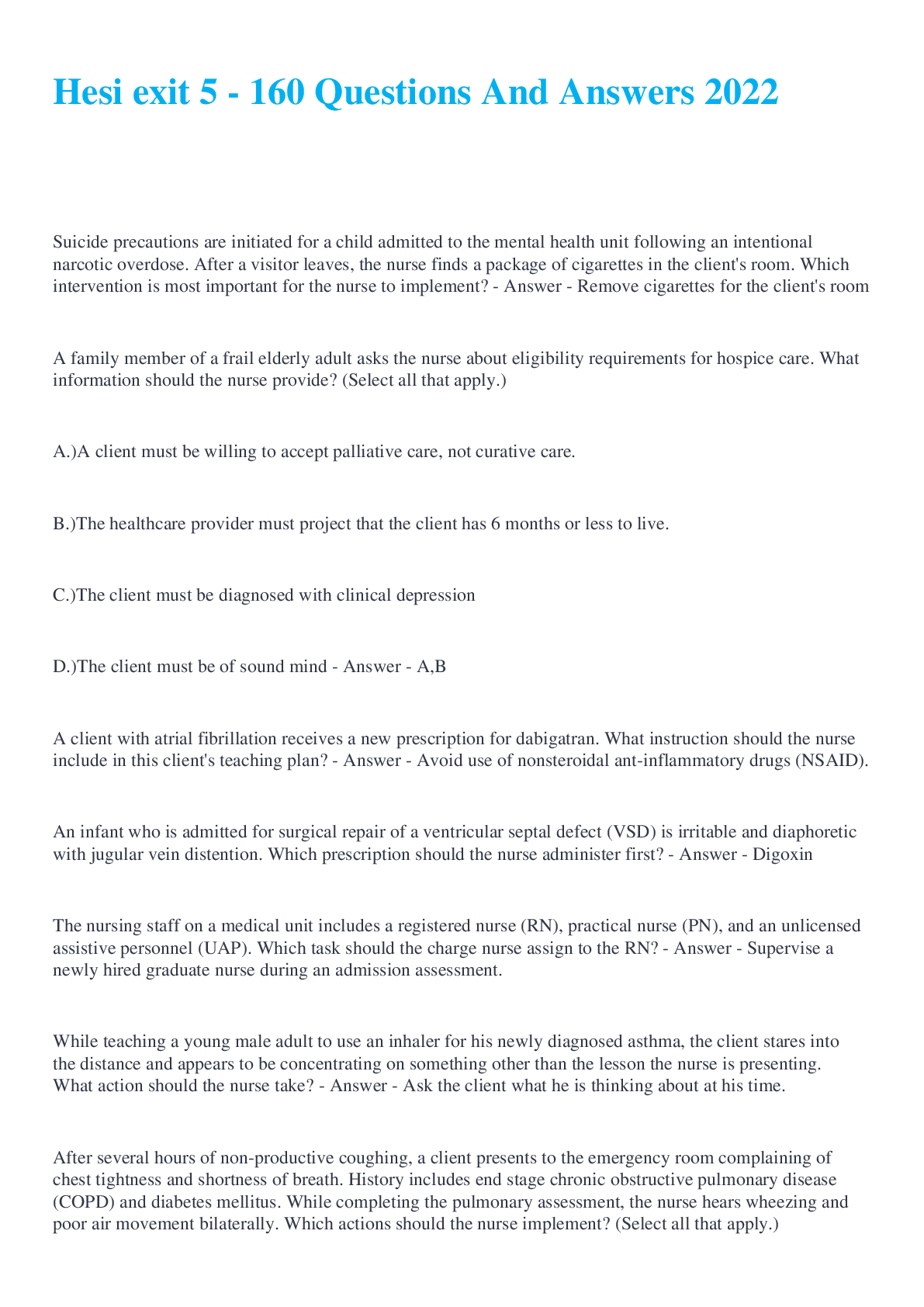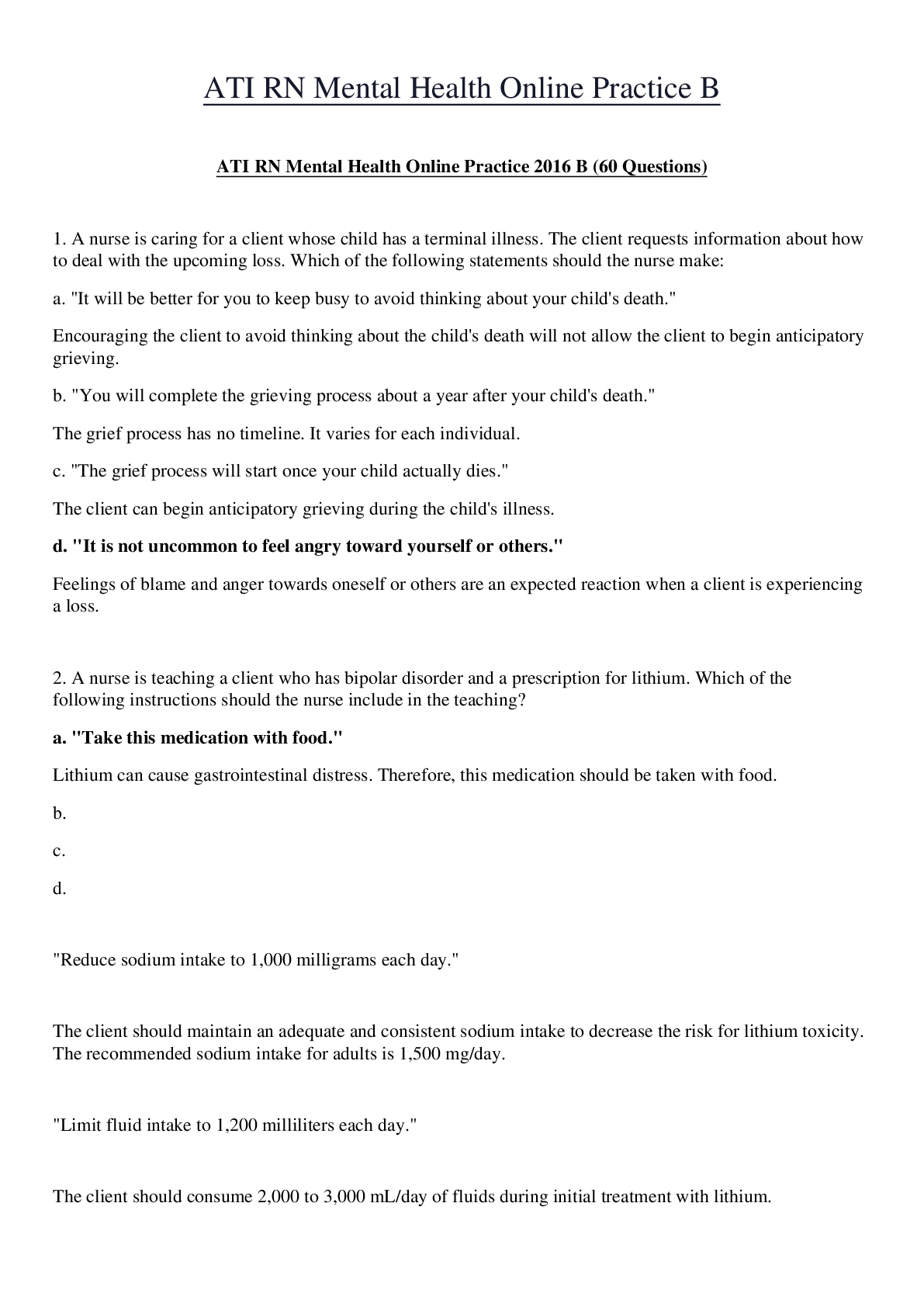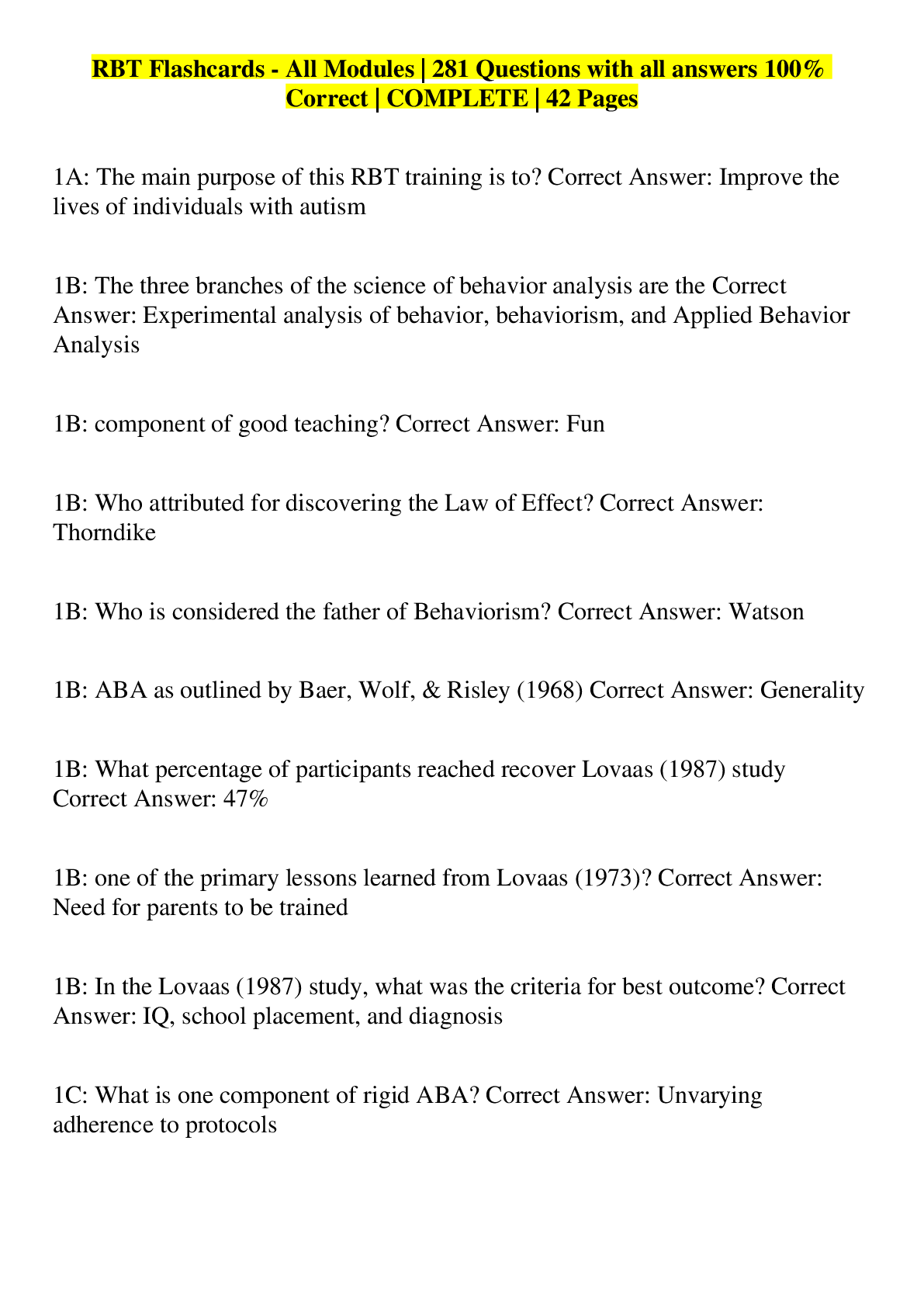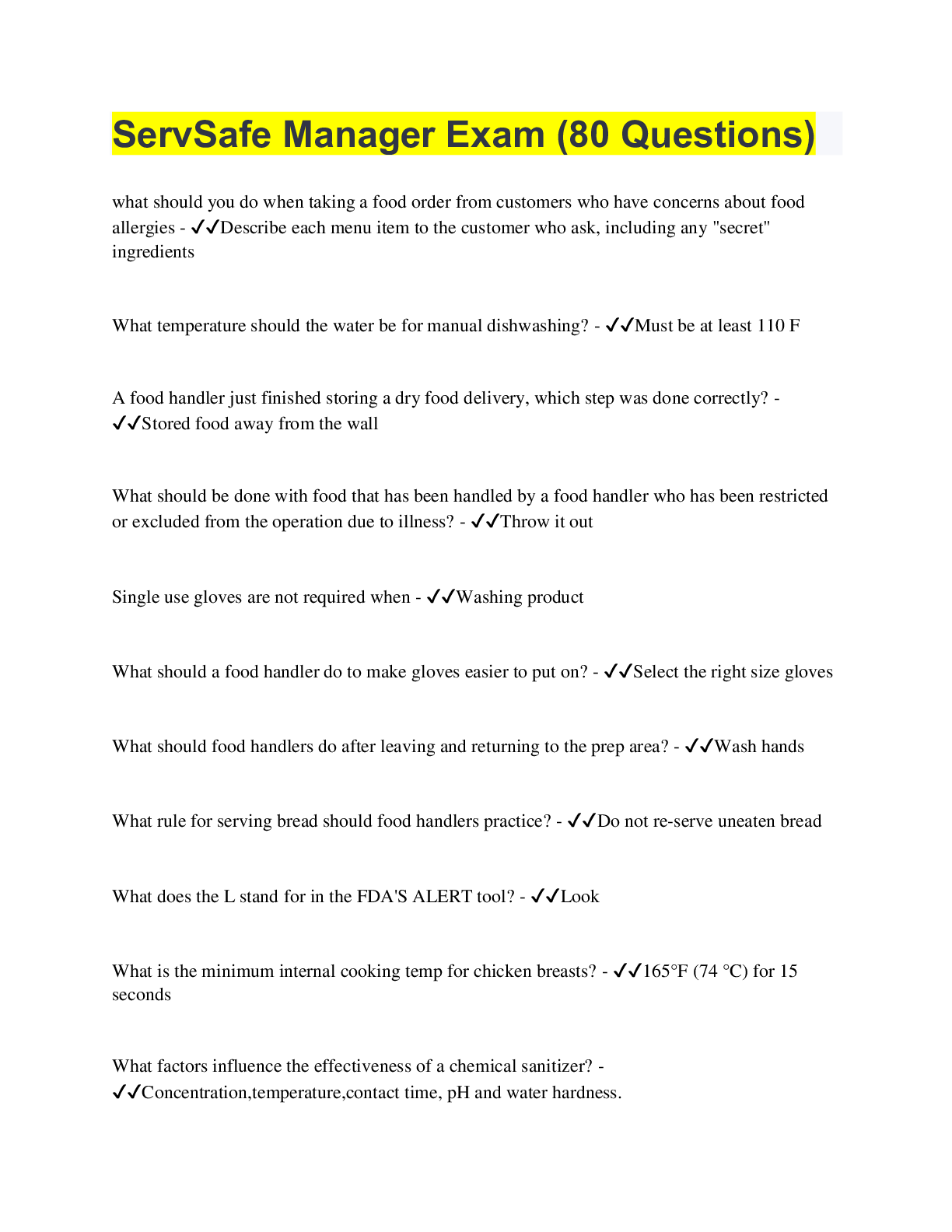NACE CP1 Quizzes, Practical Exam Questions and Answers
Document Content and Description Below
Ohm's Law relates the following... - ANSWER-volts, amps, resistance Resistance to current flow is lowest for a) low conductivity media b) small cross sectional area media c) short length of co... nductor d) high resistivity media - ANSWER-c In a series circuit a) voltage drops are always equal b) total resistance equals the sum of individual resistances c) current varies through resistors d) total current is equal to the sum of the current through each resistor - ANSWER-b According to Ohm's Law, an electrical circuit with a driving voltage of 12 Volts and a resistance of 10 Ohms produces a current of...(Amps) - ANSWER-1.2 A Kirchoff's Current Law - ANSWER-the total current entering a circuit branch must equal the current leaving the branch Kirchoff's Voltage Law - ANSWER-the sum of the voltage drops in a series circuit must equal the circuit's total voltage In a series electrical circuit a) current is different across each resistor b) Kirchoff's Voltage Law is obeyed c) voltage is the same across each resistor d) total resistance is the sum of the reciprocal of each resistance - ANSWER-b In a parallel electrical circuit a) total resistance is the sum of all of the resistors b) current is the same through each resistor c) voltage is different across each resistor d) voltage is the same across each resistor - ANSWER-d The driving voltage of an electrical circuit with a resistance of 1 Ohm and 100 mA is...(Volts) - ANSWER-0.1 V What is the total resistance in a series circuit consisting of three resistances: 1 Ohm, 2 Ohms, and 10 Ohms? - ANSWER-13 Ohms If a resistance of 0.17 Ohms was measured across a conductive material L = 1 m, D = 10 cm, what is its resistivity? - ANSWER-0.13 Ohm-cm Cations are _____ charged ions - ANSWER-positively Anions are ______ charged ions - ANSWER-negatively Which of the follow is true about an electrochemical cell? a) as polarization decreases, current will decrease b) as polarization increases, current will decrease c) as polarization increases, there is no change in current d) as polarization decreases, there is a decrease in driving voltage - ANSWER-b Why does corrosion rate decrease as polarization increases? - ANSWER-polarization lowers potential difference between anode and cathode, causing a reduction in corrosion current and corrosion rate The weight of any material deposited on the cathode or released from the anode is a) directly proportional to the current b) directly proportional to the total resistance c) inversely proportional to the current d) inversely proportional to the resistance - ANSWER-a Oxidation a) increases the negative charge of an atom or compound b) decreases the positive charge of an atom or compound c) is independent of reduction d) occurs when the electrons are lost from an atom or compound - ANSWER-d Electrochemical corrosion requires a) an anode and electronic path b) a cathode and electrolyte c) an anode, a cathode, and an electronic path d) an anode, a cathode, an electrolyte, and an electronic path - ANSWER-d In an anodic process a) positively charged ions leave the anode and enter the electrolyte b) electrons flow through the electronic path from cathode to anode c) negatively charged ions leave the anode and enter the electrolyte d) positively charged ions leave the cathode and enter the electrolyte - ANSWER-a An electrochemical reaction consists of a) an oxidation half reaction and electron movement in the metallic path b) a reduction half reaction and ionic movement in the electrolyte c) an oxidation half reaction, a reduction half reaction, and electron movement in the metallic path d) an oxidation half reaction, a reduction half reaction, ionic movement in the electrolyte, and electron movement in the metallic path - ANSWER-d Resistance is measured in... - ANSWER-Ohms In a corrosion cell, electrons flow in the direction of ______ through the _____ - ANSWER-anode to cathode, metallic (electronic) path Conventional current is in the direction of...(for electrolyte, for metallic path) - ANSWER-anode to cathode, cathode to anode The reduction reaction that occurs in an electrochemical reaction a) occurs at the anode b) occurs at the cathode c) occurs at the anode and involves the loss of electrons d) occurs at the cathode and involves the gain of electrons - ANSWER-d In the galvanic series, the more active metals a) are more cathodic metals than noble metals b) will corrode if connected to a less active metal c) will not corrode if connected to a less active metal d) are generally resistant to corrosion - ANSWER-b In a corrosion cell, which of the following is NOT required? a) oxygen b) cathode c) anode d) electrolyte - ANSWER-a The portion of the metal that is corroding is called the... - ANSWER-anode At the anode in an electrochemical corrosion cell a) electrons leave the anode and enter the electrolyte b) positively charged ions leave the anode and enter the electrolyte c) electrons leave the cathode and enter the electrolyte d) negatively charged ions leave the anode and enter the electrolyte - ANSWER-b Reactions in the electrochemical corrosion cell consist of... - ANSWER-oxidation, reduction, electron transfer through electronic path, ion transfer through the electrolyte In a galvanic series, compared to noble metals, the more active metals a) are resistant to corrosion b) are cathodic to the noble metals c) have a tendency to corrode more easily d) have a less negative potential - ANSWER-c Compared to an impressed current system, a galvanic anode system has the following advantage a) no external power is required b) current can easily be adjusted c) more suitable for high resistivity soil d) high current capacity - ANSWER-a Compared to magnesium anodes, zinc anodes tend to have a a) lower efficiency b) less negative open circuit potential c) higher current in higher soil resistivity d) lower life expectancy - ANSWER-b In an impressed current system, what rectifier terminal is connected to the anodes? - ANSWER-positive The quantity of polarization is determined by which structure to electrolyte potential? a) on b) off c) difference between on and off d) difference between off and native - ANSWER-d What is the difference between off and native structure to electrolyte potentials? - ANSWER-polarized potential The polarized potential criterion of -850 mVCSE for cathodic protection is for what metal? - ANSWER-steel The criterion of -850 mV is referenced to which electrode? - ANSWER-copper-copper sulfate A commonly used galvanic anode material for steel is... - ANSWER-magnesium Galvanic anodes are generally used where a) a large amount of current is required b) soil resistivity is high c) a small amount of current is required d) control of current is required - ANSWER-c The criterion for cathodic protection of -850 mV applies to which of the follow conditions? a) any metal in the galvanic series b) any metal in the galvanic series and referenced to copper-copper sulfate electrode c) only steel or cast iron and referenced to a copper-copper sulfate electrode d) only steel or cast iron and referenced to a silver-silver chloride electrode - ANSWER-c When the cathodic protection current is interrupted, the difference in potential with current applied and the instant off potential is... - ANSWER-IR drop Which of the following will likely reduce the current requirement for cathodic protection? a) increased temperature b) increased velocity of the electrolyte c) presence of sulfate reducing bacteria d) decreased oxygen - ANSWER-d Which reference electrode is field rugged and designed for use in seawater? - ANSWER-silver-silver chloride When measuring a structure to electrolyte potential, it is important to eliminate IR drop across which of the following? a) connection points b) through the soil c) connection points, through the soil, and reference electrode soil contact d) connection points, through the soil, metallic path, and reference electrode soil contact - ANSWER-d Which of the follow instruments can measure and store potential changes over time? a) voltmeter b) data logger c) power meter d) ohmmeter - ANSWER-b If a structure to electrolyte potential of -0.850Volts to CSE is measured which of the following conversions to another electrode is correct? a) 266mV to zinc b) -0.910 Volts to silver-silver chloride c) -72mV to calomel d) 0.780V to calomel - ANSWER-a To calculate resistivity using the Wenner 4-pin method, the following measured value is used a) voltage b) current c) resistance d) power - ANSWER-c 0.02 V across a 50 mV and 10 A shunt indicates a current of...(Amps) - ANSWER-4.0 A The current through a 50 mV and 20 A shunt with a measurement of 20 mV is...(Amps) - ANSWER-8 A In the equation used to calculate the resistivity using the Wenner 4-pin method, R represents...(units too) - ANSWER-resistance in Ohms If a resistance of 3.5 Ohms was measured using the Wenner 4-pin method and spacing between the pins is 2m, what is the resistivity? - ANSWER-4398 Ohm-cm If soil resistivity is 1000 Ohm-cm and the spacing between pins is 1m, what is the expected resistance measurement? - ANSWER-1.59 Ohms Which is a more active metal? a) copper rod in copper sulfate solution b) corroded steel in fresh water c) new steel in fresh water d) copper sheet in fresh water - ANSWER-c Compared to zinc anodes, magnesium anodes in high resistivty soil A) will deliver a higher current B) will deliver a lower current C) will have a higher efficency D) are less practical - ANSWER-a If the external circuit resistance of a constant voltage rectifier increases by two times, what will happen to the current? - ANSWER-current will be reduced by half Test stations are installed for which of the follow purposes? a) to obtain structure to electrolyte potentials b) to confirm the effectiveness of underground isolating fittings, and to confirm the isolation of road casings c) to obtain structure to electrolyte potentials, to confirm the effectiveness of underground isolating fittings, to confirm the isolation of road casings d) to obtain structure to electrolyte potentials, to confirm the effectiveness of underground isolating fittings, to confirm the isolation of road casings, and to measure the amount and direction of current in a pipeline - ANSWER-d Typically, a constant voltage cathodic protection rectifier will NOT have a) transformer b) transistor c) rectifying element d) voltage tapes - ANSWER-b What configurations can impressed current anode beds be installed in? (4) - ANSWER-remote shallow vertical anodes, remote shallow horizontal anodes, deep vertical anodes, distributed shallow vertical anodes An adverse effect of stray DC current discharging from a metal into an electrolyte is the a) loss of current to the foreign source of the current b) loss of current to the structure's cathodic protection system c) loss of metal from the structure d) gain of metal on the foreign structure - ANSWER-c What are typical resources of stray current? (3) - ANSWER-cathodic protection systems, DC transit systems, telluric currents How can stray current corrosion be controlled? (4) - ANSWER-relocating current source, removing current source, cathodic protection, mitigation bonds The reasons to monitor a cathodic protection system include a) maintain corrosion control since CP is only [Show More]
Last updated: 1 year ago
Preview 1 out of 11 pages
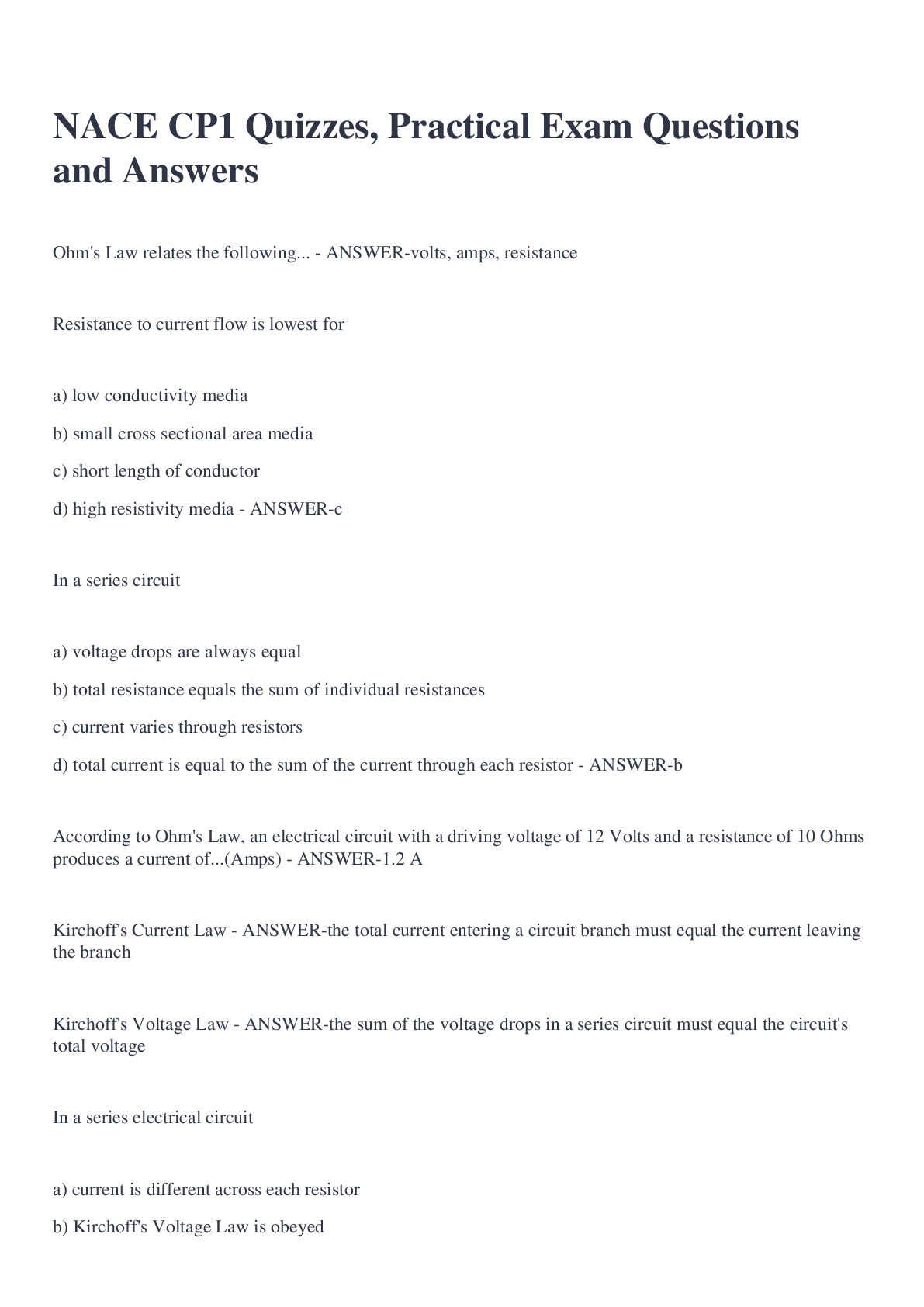
Reviews( 0 )
Document information
Connected school, study & course
About the document
Uploaded On
Feb 01, 2023
Number of pages
11
Written in
Additional information
This document has been written for:
Uploaded
Feb 01, 2023
Downloads
0
Views
49

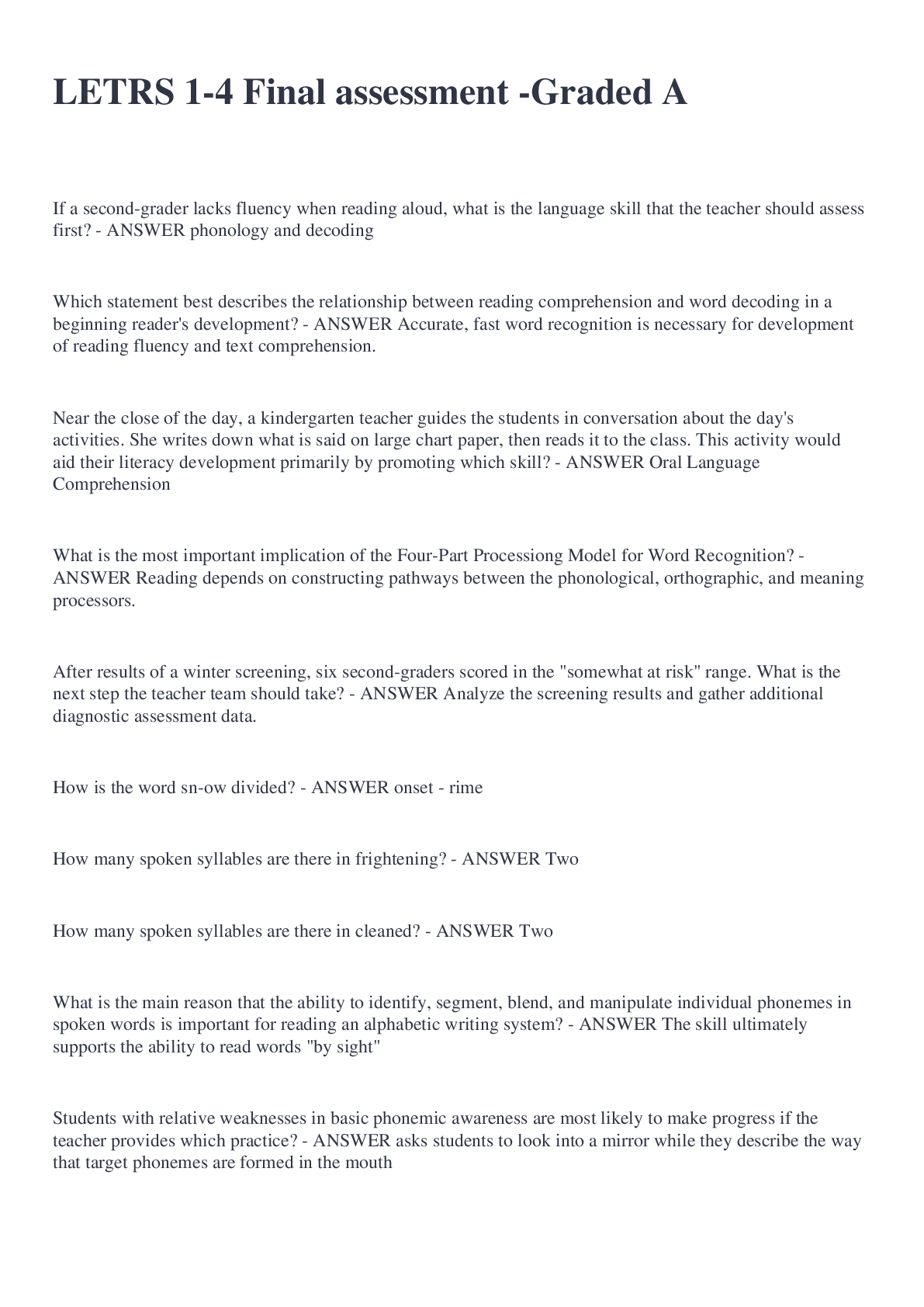


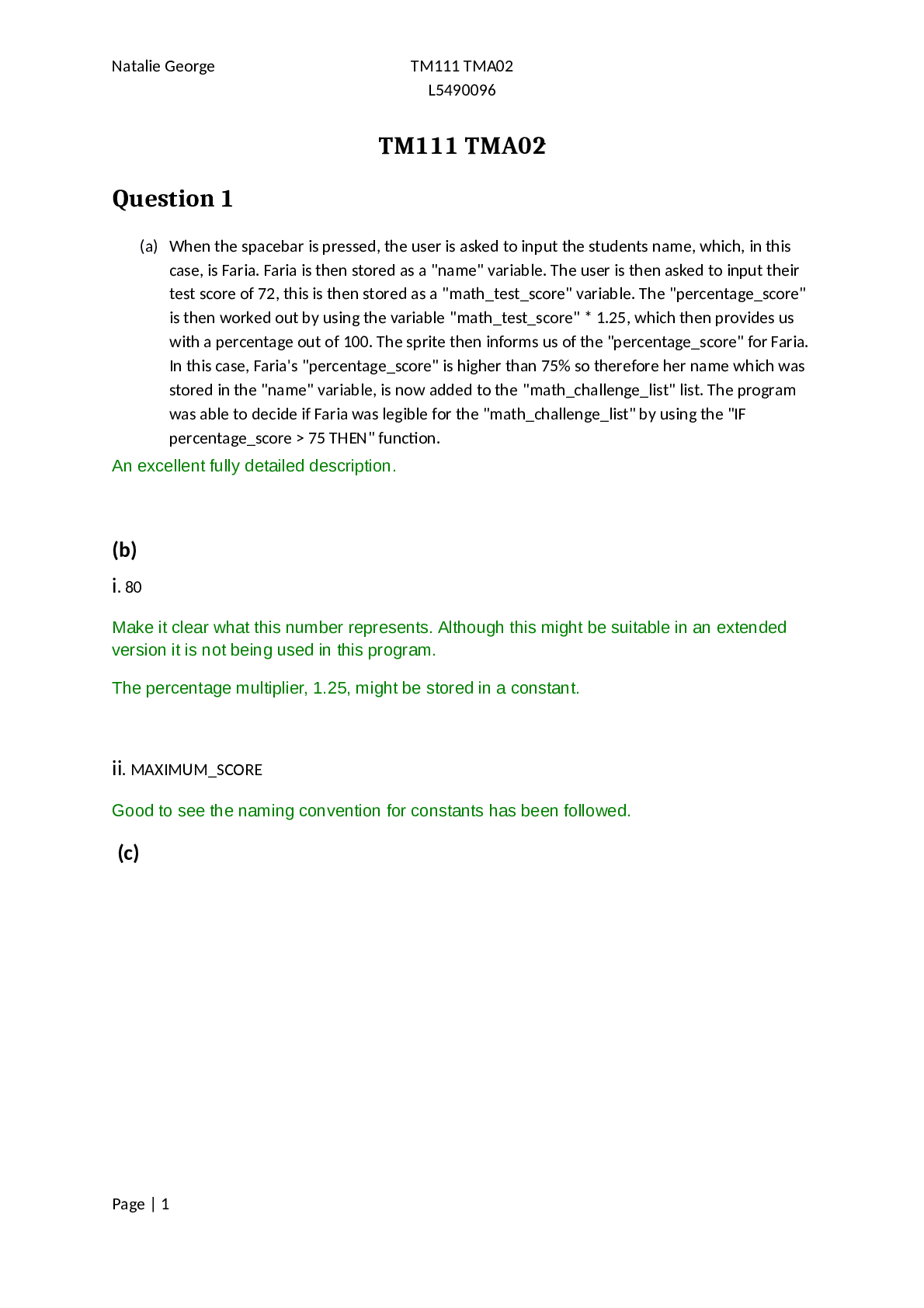


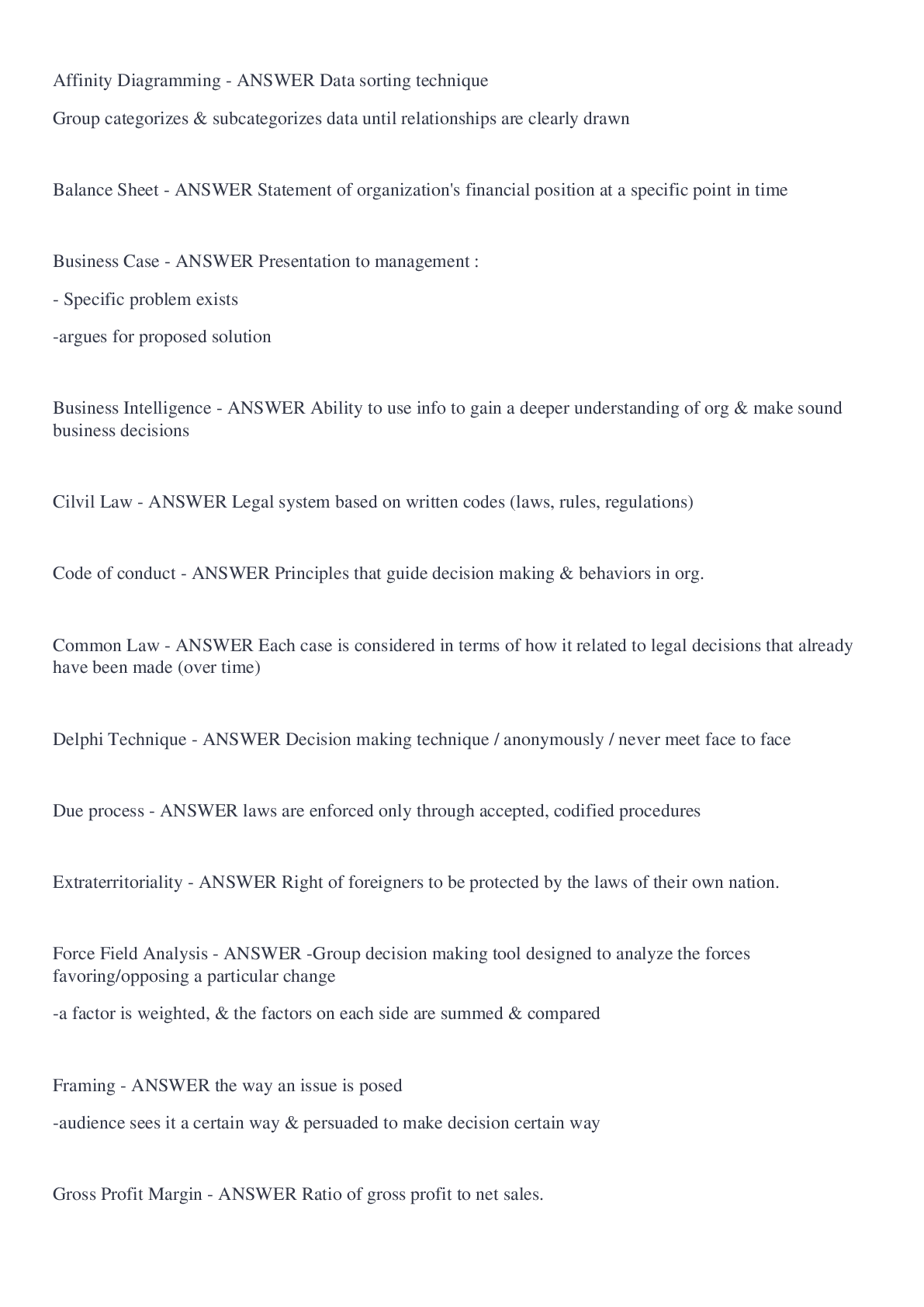

.png)

